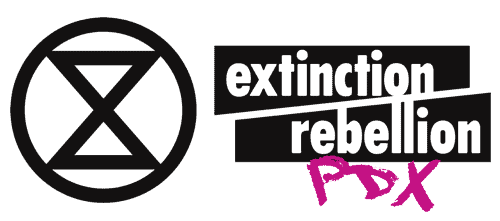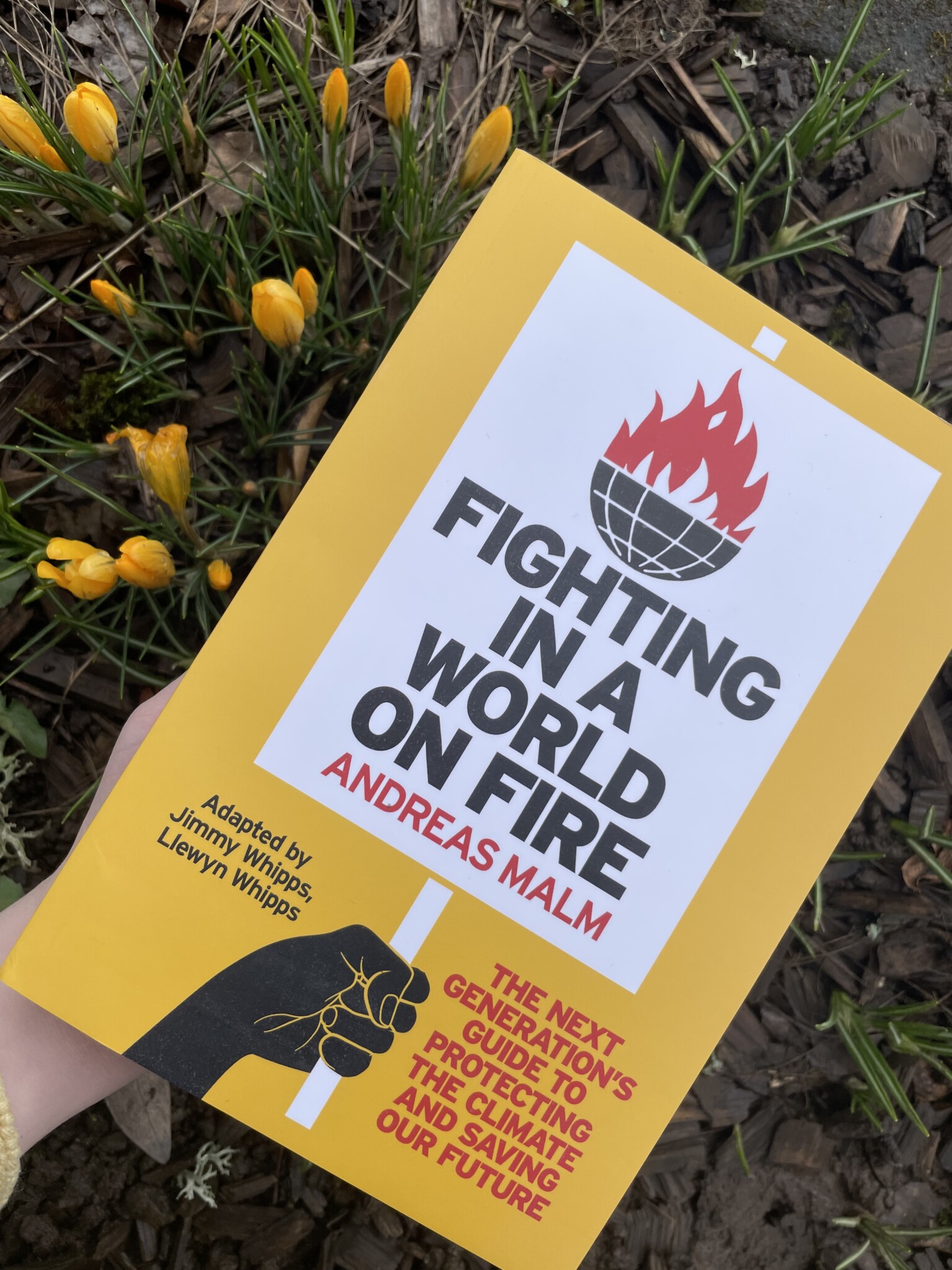Fighting in a World on Fire is an adaptation, for a younger audience, of Andreas Malm’s How to Blow up a Pipeline by Jimmy and Llewyn Whipps. Fighting in a World on Fire is a call for the climate movement to become more militant, to use tactics like property destruction and violence against the fossil fuel industry. It outlines the history of recent large-scale movements and rebellions, and shows that they weren’t as nonviolent as we’d like to think they were. Discussion concerns past and current movements’ use of pipeline destruction, and the question is raised: if we’ve blown up pipelines for other reasons, why not for the climate crisis?
Peppered with history, biographies, facts, and excerpts from speeches, the book is well-written and informed. Someone who knows very little about the history or science behind the climate movement could pick this up, learn a lot, and comprehend it with ease, which is what the adaptors aimed for by targeting a young adult audience.
Capitalism funds the climate crisis. We cannot rely on our governments and the ultra wealthy to save us. We also cannot blame the consumers and must place blame on the producers of the problem. At this point in the climate movement, these are things we know. Common knowledge.
Malm’s argument is that the ways that the broader climate movement is going about targeting those causing the problem – those same governments, the ultra wealthy, and the producing corporations – are not and will not be effective because we’re relying on those people to care about us little folk. And they don’t and they won’t. So looking back on history, we must incite fear into them. Fear that they are not above the problem. And the way Malm says we should go about this is with a more militant arm of the climate movement, with violence.
How do we define violence? This question is discussed at length in the book, from many points of view including pacifism, morality, and theology. XRPDX has been discussing this too. We’re part of an organization committed to non violence, it’s our ninth principle: “WE ARE A NON-VIOLENT NETWORK, Using non-violent strategy and tactics as the most effective way to bring about change.” But how do we define violence? Is wheat pasting property damage? Some would argue so. The murals that many activists paint could be damaged property. And XRUK’s smashing of bank windows without a doubt falls under the label.
Now, Malm is not advocating for violence against individuals or actions that could harm human beings. But property destruction, stopping the fossil fuel production at its source, that’s what is being proposed. He goes on to say that “righteous property destruction falls within the boundaries of non-violence.”
I will say, this “what is violence” discussion, although very well-written and thought provoking, felt like the book’s weakest point. No two people are ever going to fully agree to what violence is, and by rehashing the question over and over felt like valuable pages could have been used on other points, or perhaps on tactics, rallying cries, or building the hope that is needed to incite long-term action.
While reading, this struck me as a very European book. The author himself is Swedish and mostly centers European action and activism. There is brief discussion on the political climate in the US, but not enough to warrant endangering folks in our prison system.
After witnessing the public’s reaction to the property destruction during the 2020 Black Lives Matter protests, I found that my gut reaction was outright rejection of the arguments put forth by Malm. He acknowledges this too. Malm, a Swede, has a different view of property destruction than those in the US, where “intolerance for violence committed by social movements is at its highest.” So looking further, past the initial claim that non-violence isn’t working fast enough, the proposal to use violent tactics against the fossil fuel industry is tempting. I was reminded of my high school AP Environmental Science class’s reaction to learning about dams’ impact on salmon populations. Then the cry of “let’s just go blow them up” didn’t seem too radical. So why should it be now?
Does this book inspire folks into action? I’m sure for some it will. But for others, the disparagement of the current climate movement and the heavy focus on climate doom may spark climate guilt and grief, emotions that we know are not productive to action. I found myself feeling this way, that all the work we do and have done is pointless and futile, and had to take a step back and remind myself that we are doing something. And if you’re looking for a positive look on Extinction Rebellion, do not look here. There is valuable, but heavy, critique of the XR movement in these pages.
Is this a good book? Yes. It’s well worth the read, and for us activists who are deeply entrenched in XR and nonviolent civil disobedience, hearing from a different point of view is incredibly valuable. It’s a well researched, well-written, good book. Is it an easy or truly enjoyable read? Maybe. It definitely has that powerful mix of love, outrage, despair, hope, and energy that climate books contain. If you have a young person in your life who is involved in the climate movement, you might want to suggest this book.
I was kindly provided a copy to review by the editors, but that does not impact my review in any way. You can find a copy for yourself at Multnomah County Library here, or at Powell’s here.

